Celebrating Women's History Month: Trailblazing Women in Science
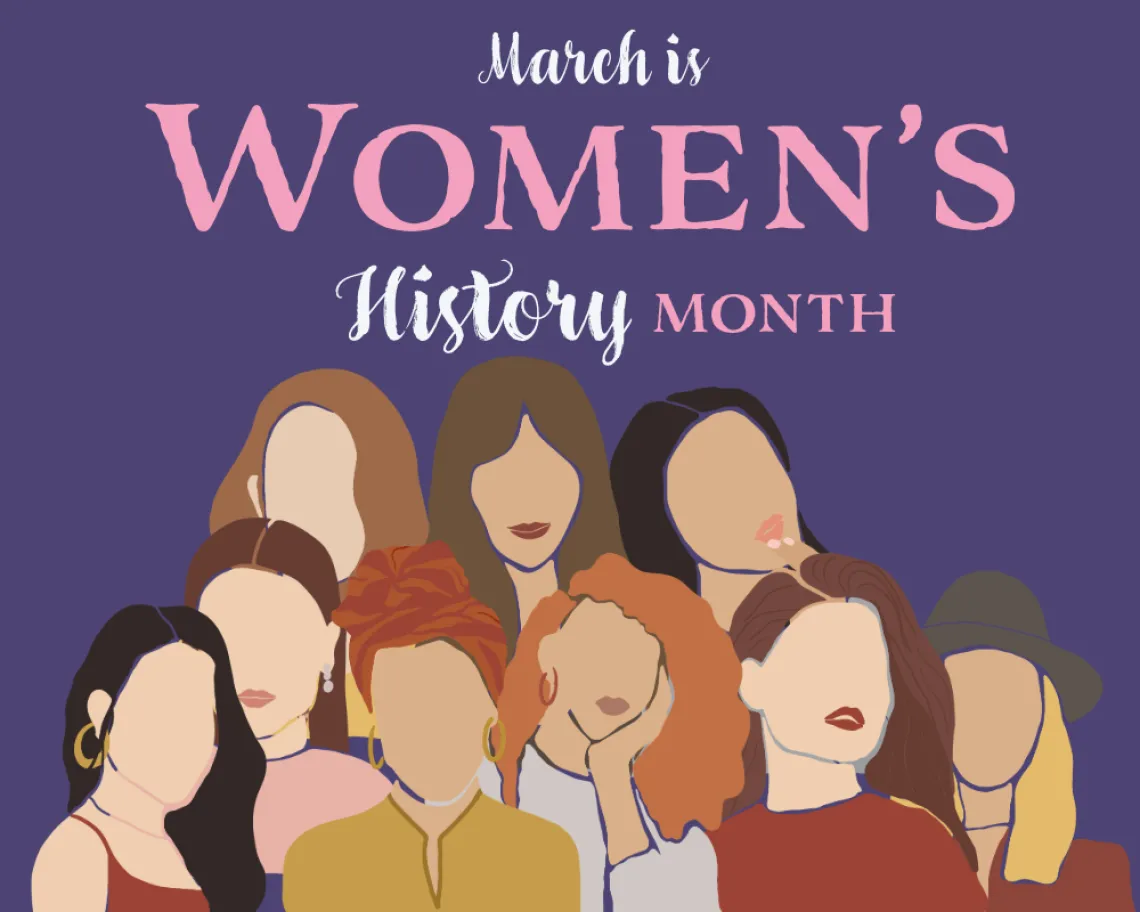
Dr. Ellen Ochoa
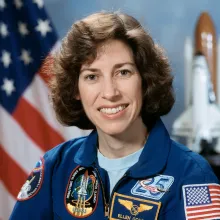
New York Historical Society
Dr. Ellen Ochoa, born in 1958, is an American engineer, former astronaut, and former director of the Johnson Space Center. She was the first Hispanic director and the second female director of Johnson Space Center. In 1993, Ochoa made history as the first Hispanic woman in space during a nine-day mission aboard the Space Shuttle Discovery. Graduating as valedictorian, Ochoa initially pursued physics at San Diego State University before earning her doctorate and developing innovative optical inspection systems. In her doctorate program, Ellen worked with two professors on developing a new optical inspection system that made it easier to identify mistakes in repeating patterns. They received a patent for this system. Ellen went on to obtain two more patents in optics. Despite initial setbacks, Ochoa persisted, securing a research role at Sandia National Laboratories before being accepted into NASA's astronaut training program in 1990. Selected for her first mission in 1993, Ochoa became the first Latina to venture into space, marking a significant milestone in space exploration.
Read more about Dr. Ellen Ochoa
Dr. Donna Strickland
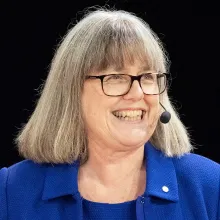
Bengt Nyman from Vaxholm, Sweden
Dr. Donna Theo Strickland, born in 1959, is a Canadian optical physicist renowned for her groundbreaking work in pulsed lasers, for which she was awarded the Nobel Prize in Physics in 2018 alongside Gérard Mourou. Serving as a professor at the University of Waterloo in Ontario, Canada, Strickland's journey began at McMaster University, where she graduated with a Bachelor of Engineering degree in engineering physics. After earning her Doctor of Philosophy degree from the University of Rochester, Strickland collaborated with Mourou to develop chirped pulse amplification, a technique crucial for generating ultrashort optical pulses of terawatt to petawatt intensity. Joining the University of Waterloo in 1997, Strickland made history as the institution's first full-time female professor in physics, leading pioneering research in ultrafast laser systems. With a distinguished career, Strickland continues to be a trailblazer in the field, recognized as a fellow of Optica and holding leadership roles in various scientific organizations.
Read more about Dr. Donna Strickland
Dr. Julie Bentley
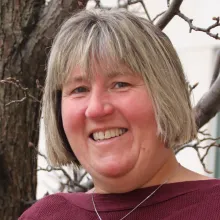
Optica
Dr. Julie Bentley, holding both a BS degree and a PhD from the Institute of Optics at the University of Rochester is a professor specializing in geometrical optics, optical design, and product design for over two decades. With expertise in precision optical assemblies, Bentley has authored multiple books on lens design and conducts global short courses, drawing from her prior experience managing a commercial team at Corning Tropel, USA. As the founder of Bentley Optical Design, she undertakes diverse design projects spanning biomedical instruments to consumer and military optics. Bentley's contributions extend beyond academia; she serves on Optica committees, including as an editor for Optics Express, and has received prestigious awards such as the University of Rochester's Goergen Award and the Esther Hoffman Beller Medal from Optica in 2022 for her significant impact on optics education.
Read more about Dr. Julie Bentley
Dr. Vera Rubin
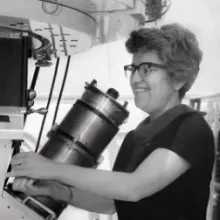
NOIRLab
Dr. Vera Rubin, born in 1928 in Philadelphia and passing away in 2016, made groundbreaking contributions to astronomy by providing the first direct evidence of dark matter's existence, revolutionizing the field. Despite facing sexism and skepticism, she advocated for women in science and inspired future generations. Rubin's early fascination with the stars led her to pursue astronomy at Vassar College, where she investigated the movement of galaxies for her master's thesis, later confirmed as the supergalactic plane. Completing her PhD at Georgetown University in 1954, Rubin's research demonstrated that galaxies cluster together, challenging existing theories and shaping our understanding of the universe. Fifteen years later, Rubin's findings were confirmed.
Read more about Dr. Vera Rubin
Dr. Helen Quinn
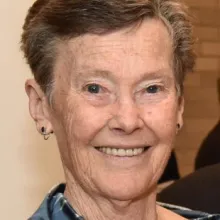
Stanford University
Dr. Helen Quinn, a distinguished physicist, earned her PhD from Stanford in 1967 and has taught at prestigious institutions like Harvard and Stanford. She holds memberships in esteemed scientific societies and has received numerous awards, including the Dirac Medal and the Benjamin Franklin Medal for Physics, among others. She is a Fellow and former president of the American Physical Society. Throughout her career, Quinn has been dedicated to science education, co-founding the Contemporary Physics Education Project and contributing significantly to the development of science education frameworks. As one example, she chaired the committee for the “Framework for K-12 Science Education”, which is the basis of the Next Generation Science Standards (NGSS) and similar standards now adopted by about 30 states in the USA. Since retiring in 2010, she has remained actively involved in educational initiatives, serving on various committees and advising on educational policy internationally.
Read more about Dr. Helen Quinn
Dr. Willie Hobbs Moore
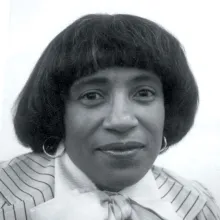
Ronald E. Mickens Collection on African-American Physicists, AIP Niels Bohr Library and Archives
Dr. Willie Hobbs Moore, the first Black woman to earn a PhD in physics, exhibited exceptional academic prowess from an early age. Graduating from the University of Michigan with both BS (1958) and MS (1961) degrees in electrical engineering, she embarked on a remarkable career, contributing significantly to aerospace engineering and theoretical physics. After working at the Bendix Aerospace Systems Division and the Barnes Engineering Company she returned to University of Michigan to obtain her PhD in physics in 1966, finishing it in 1972. Despite facing barriers, Moore's commitment to excellence remained unwavering, as evidenced by her groundbreaking research on polyvinylchloride (PVC) polymers during her doctoral studies. Her legacy continues to inspire generations of scientists, embodying the importance of perseverance and dedication in the pursuit of knowledge. Moore’s personal mantra was “You’ve got to be excellent.”
Read more about Dr. Willie Hobbs Moore
Mary Golda Ross
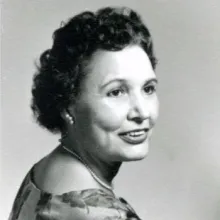
PBS News
Mary Golda Ross, the first Native American woman engineer, credited her Cherokee upbringing for her achievements, emphasizing the community's focus on education and gender equality. Born in 1908 in Park Hill, Oklahoma, to a family with Cherokee heritage, Ross's great-great-grandfather was Chief John Ross during the era of the Indian Removal Act. After earning a math degree from Northeastern State Teachers College, she pursued further education, obtaining a master's degree in math. During World War II, Ross joined Lockheed Aircraft, where she contributed to designing the P-38 Lightning fighter. As one of the few women and the sole Native American at Lockheed's Skunkworks, Ross played a pivotal role in aerospace technology. Following her retirement, she dedicated herself to advocating for women and Native Americans in STEM fields until her passing in 2008, leaving behind a lasting legacy commemorated by her image on the 2019 minting of the Sacagawea $1 coin.
Read more about Mary Golda Ross
Dr. Chien-Shiung Wu

Smithsonian Institution
Dr. Chien-Shiung Wu, a pioneering physicist, made significant contributions to experimental physics and the Manhattan Project, despite facing discrimination. Born in China in 1912, she earned her PhD from UC Berkeley in 1940 and became the first female faculty member in Princeton's Physics Department. Joining Columbia University, she worked on the Manhattan Project, focusing on radiation detection and uranium enrichment. Wu's research confirmed Enrico Fermi's theory of beta decay and contributed to advancements in atomic science. Despite being overlooked for the Nobel Prize, she received numerous accolades, including being elected to the National Academy of Sciences and becoming the first woman president of the American Physical Society. In 1990, an asteroid was named in her honor.
Read more about Dr. Chien-Shiung Wu
These remarkable women have not only made significant contributions to their respective fields but have also paved the way for future generations of scientists, leaving a lasting legacy that transcends boundaries and inspires us all.
Find out more about each of these inspiring women by following the Wyant College of Optical Sciences Instagram page, where a brief bio on each person was posted throughout the month of March in celebration of Women's History Month.
